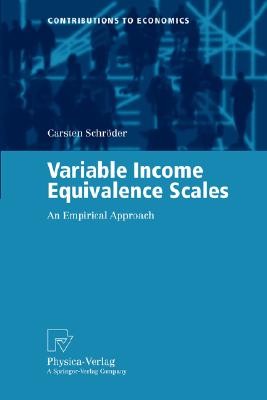
- We will send in 10–14 business days.
- Author: Carsten Schröder
- Publisher: Physica Verlag
- Year: 2004
- Pages: 168
- ISBN-10: 3790801836
- ISBN-13: 9783790801835
- Format: 15.6 x 23.4 x 1 cm, minkšti viršeliai
- Language: English
- SAVE -10% with code: EXTRA
Reviews
Description
1.1 A Brief Overview An extensive body of empirical and theoretical literature deals with the mea- surement of social welfare. This body can be decomposed in several different but related topics, all of which have implications for empirical studies in wel- fare economics. One of these topics are household equivalence scales which help to compare welfare levels across households that differ in composition. An equivalence scale relates the income of any arbitrary household type to the income ofa referencehouseholdsuch that both households are equally well-off. Differences in household needs arise from differences in the households' de- mographic composition which is, for instance, given by the number, age, and sex of the household members. The increase of household needs is not neces- sarily proportional to the increase in the number of household members. Such a non-proportionality, for example, results from differences in the needs of adults and children, economies ofscale arising from the division of fixed costs among the household members, welfare gains from household production, and from common consumption ofcommodities bearing a within-household public good component.
EXTRA 10 % discount with code: EXTRA
The promotion ends in 22d.15:22:33
The discount code is valid when purchasing from 10 €. Discounts do not stack.
- Author: Carsten Schröder
- Publisher: Physica Verlag
- Year: 2004
- Pages: 168
- ISBN-10: 3790801836
- ISBN-13: 9783790801835
- Format: 15.6 x 23.4 x 1 cm, minkšti viršeliai
- Language: English English
1.1 A Brief Overview An extensive body of empirical and theoretical literature deals with the mea- surement of social welfare. This body can be decomposed in several different but related topics, all of which have implications for empirical studies in wel- fare economics. One of these topics are household equivalence scales which help to compare welfare levels across households that differ in composition. An equivalence scale relates the income of any arbitrary household type to the income ofa referencehouseholdsuch that both households are equally well-off. Differences in household needs arise from differences in the households' de- mographic composition which is, for instance, given by the number, age, and sex of the household members. The increase of household needs is not neces- sarily proportional to the increase in the number of household members. Such a non-proportionality, for example, results from differences in the needs of adults and children, economies ofscale arising from the division of fixed costs among the household members, welfare gains from household production, and from common consumption ofcommodities bearing a within-household public good component.


Reviews